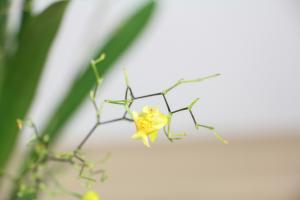Will Plants Release Water?
Plants are undoubtedly an essential part of our life. They provide us with the oxygen we need to survive and are integral to the functioning of our ecosystem. But have you ever wondered if plants release water? The answer is yes, and in this article, we will explore the various ways in which plants release water.
Transpiration
The primary way in which plants release water is through a process called transpiration. Transpiration is the process by which plants lose water from their leaves and stems, primarily through small pores called stomata. These stomata allow plants to take in carbon dioxide, which they use during photosynthesis, and release oxygen, but they also release water vapor into the air.
The rate of transpiration is affected by several factors, including temperature, humidity, and wind. In warm, dry conditions, plants will transpire water at a faster rate, whereas in cool and moist conditions, the rate of transpiration will be slower.
Guttation
Another way in which plants release water is through a process called guttation. Guttation occurs when water builds up inside the plant and is expelled through specialized structures called hydathodes. This process typically happens at night or during periods of high humidity and low wind, when the plant is not transpiring as much water through its stomata.
Guttation can also occur when the plant takes up more water than it needs, and excess water is pushed out through the hydathodes. This often happens in plants that are overwatered, causing them to release water droplets from the tips of their leaves.
Root Exudation
Plants can also release water through a process called root exudation. Root exudation is the release of organic compounds, such as sugars and amino acids, by plant roots. These compounds can attract beneficial microorganisms to the plant's roots, helping to promote healthy growth and development. In the process of root exudation, plants also release water into the soil, which can be taken up by other plants in the vicinity.
Conclusion
In conclusion, plants do release water, primarily through transpiration, but also through guttation and root exudation. Understanding how plants release water is critical to understanding their role in our ecosystem and how we can work to promote their growth and development. By recognizing the complex ways in which plants interact with their environment, we can better appreciate the vital role they play in sustaining life on earth.

 how many times do yo...
how many times do yo... how many planted tre...
how many planted tre... how many pine trees ...
how many pine trees ... how many pecan trees...
how many pecan trees... how many plants comp...
how many plants comp... how many plants can ...
how many plants can ... how many plants and ...
how many plants and ... how many pepper plan...
how many pepper plan...































